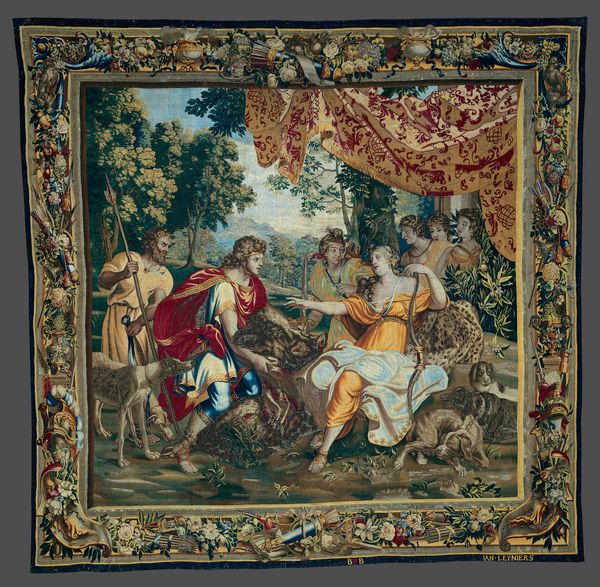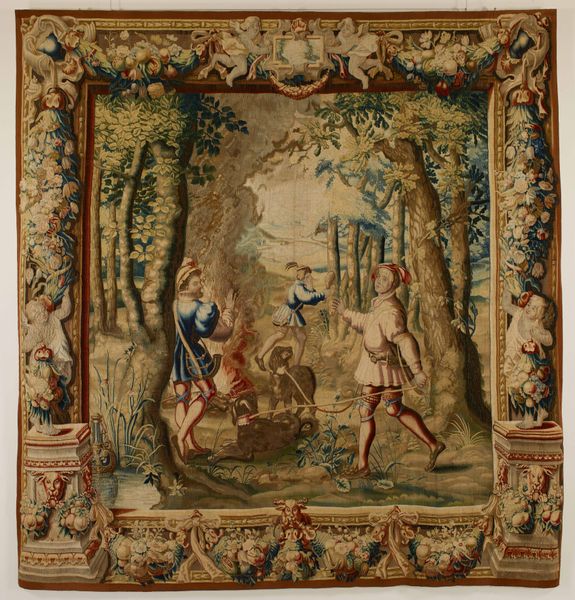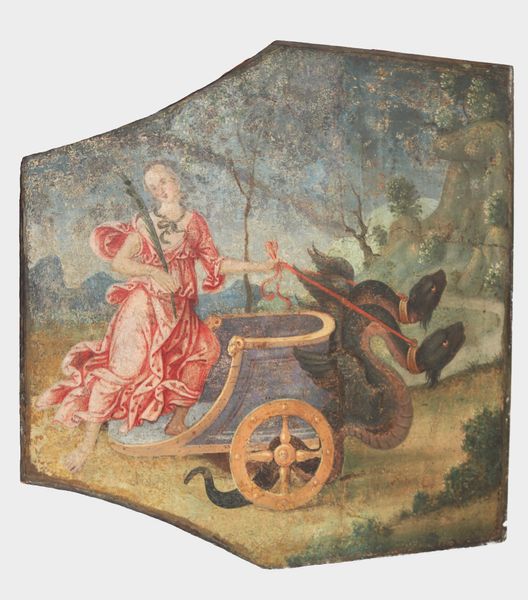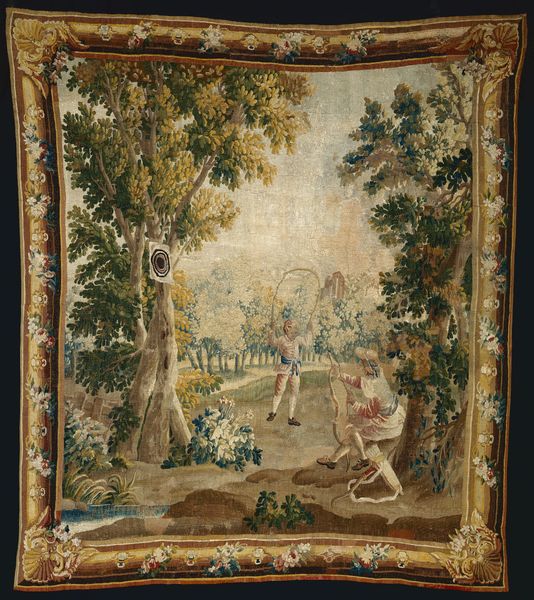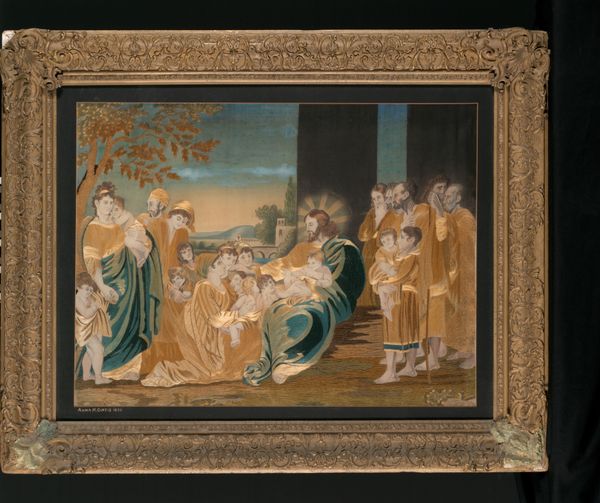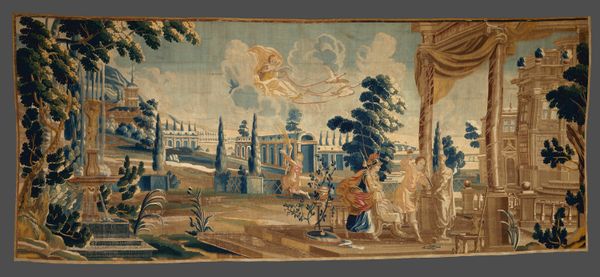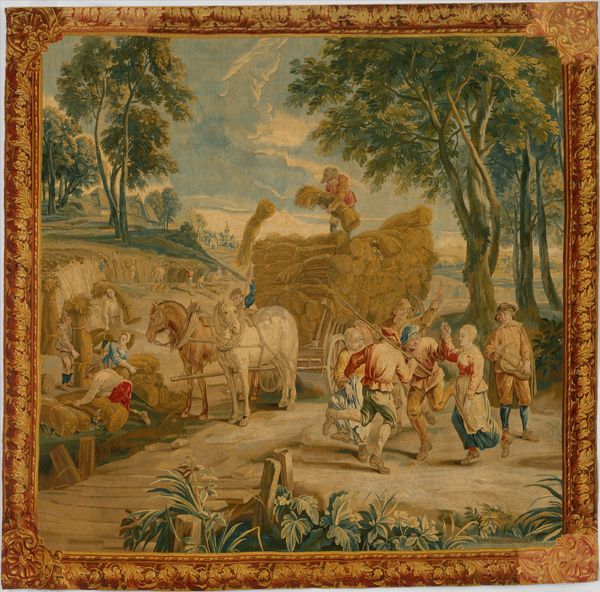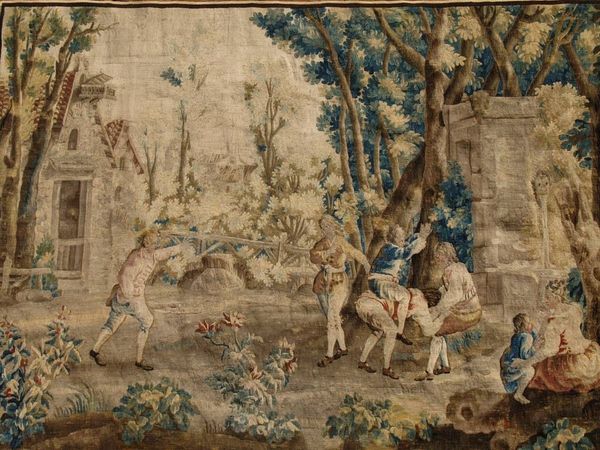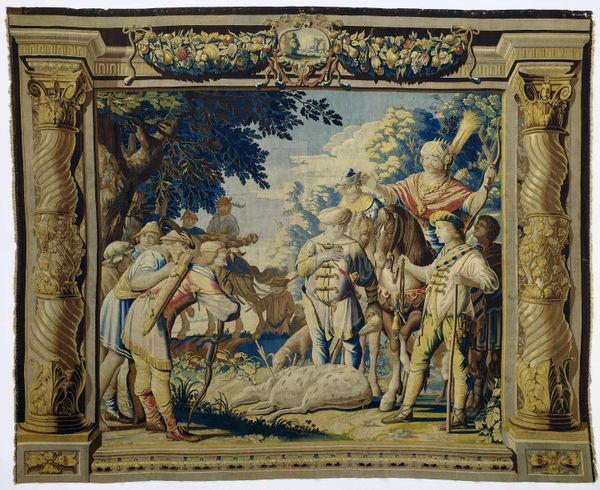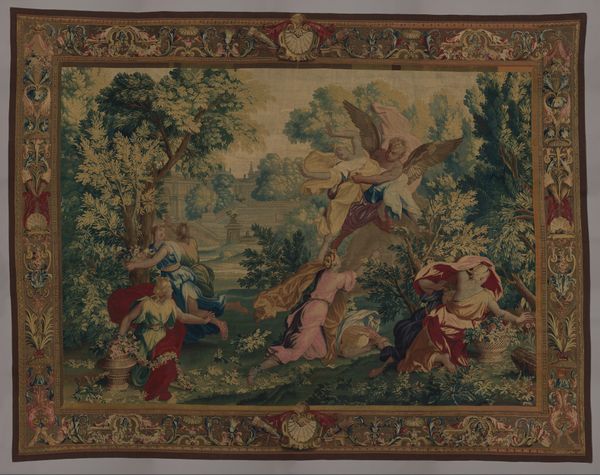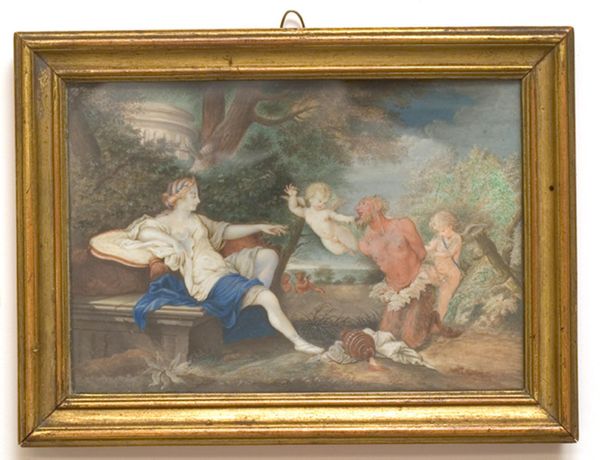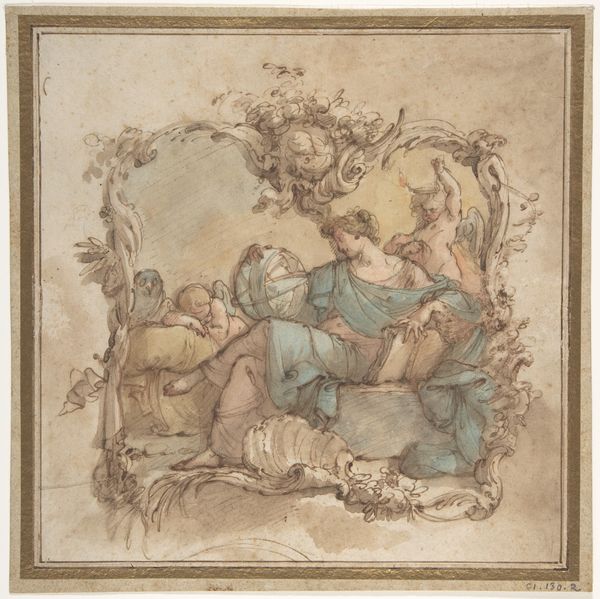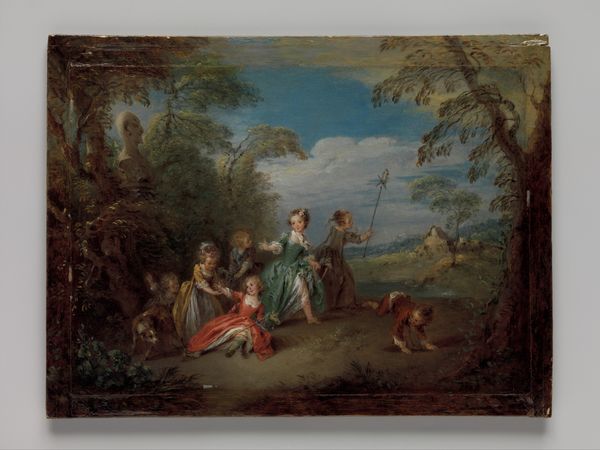
Dimensions: Overall: 3 × 3 7/8 in. (7.6 × 9.8 cm)
Copyright: Public Domain
Editor: Here we have Augustin Le Grand’s "Sleeping Shepherdess," a gouache painting created around 1775-1780. It's idyllic, almost dreamlike, but the scene feels very staged. What’s your read on this work? Curator: This miniature painting invites us to think about the performance of pastoral life in Rococo art. The “shepherdess” isn’t engaging in labor; rather, she’s an object of leisure, and perhaps male fantasy. What does it mean to portray a rural life devoid of the hardships actually faced by those who worked the land? Editor: I see what you mean. The shepherdess and her companion, even with the sheep, look more like aristocrats playing dress-up than actual workers. Does this relate to broader social issues of the time? Curator: Absolutely. Rococo art often served as a form of escapism for the elite, offering an idealized vision of nature and love while ignoring the growing social and economic inequalities of the pre-Revolutionary period. This art becomes a kind of propaganda, reinforcing a certain social order. How does the shepherd’s almost forceful leaning over her impact your interpretation? Editor: It does bring in another layer, doesn’t it? There is something performative about his gesture, a mixture of control and a show of affection. It highlights the unequal dynamic. Curator: Exactly. By understanding the painting's historical context and considering power dynamics, we can move beyond its decorative surface. This idyllic scene isn't just about beauty, but also about class, gender, and the political climate of 18th-century France. Editor: I hadn’t considered it that way before, but now the image feels far less innocent. Thanks, that gives me so much more to think about. Curator: My pleasure. It’s through these intersectional perspectives that art history truly comes alive.
Comments
No comments
Be the first to comment and join the conversation on the ultimate creative platform.
